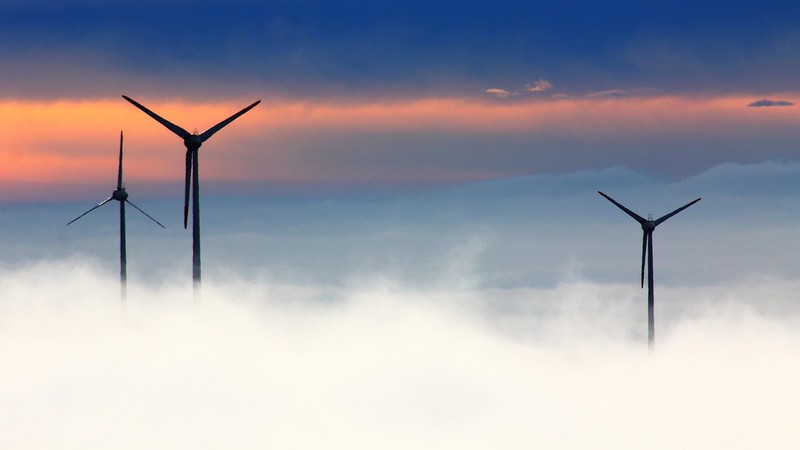In 2021, California drew 37 percent of its electricity from clean, renewable sources.

California ranks seventh in wind power, with 3.5 percent of all U.S. wind energy produced here. Oimheidi / Pixabay Pixabay License
As California forges onward toward its goal of generating 100 percent of its electricity from renewable sources, new data shows that while the state set a new record for clean energy in 2021, it still ranks 13th nationally. South Dakota leads the country in renewable energy percentage, generating 82 percent of its electricity from “clean” energy sources such as wind and solar power, according to data from the U.S. Energy Information Administration (EIA). More than 50 percent of South Dakota’s electricity is generated by wind power.
Of course, with a population barely topping 900,000—the fifth-smallest in the United States—South Dakota produces a relatively small amount of electricity, meaning that however commendable, that state’s contribution to the country’s overall move to non-carbon-generating energy sources is also small.
California, on the other hand, is the country’s fourth-largest producer of electricity, with nearly five percent of all power produced in the country generated in the state. And according to a report released in May by the California Energy Commission, 37 percent of California electricity in 2021 came from renewable sources, mainly wind and solar.
California Ranks Seventh in Wind Power
Adding in nuclear power and energy from large hydroelectric plants, about 59 percent of the state's power is generated from sources other than highly polluting fossil fuels. But the state does not count large hydro plants as “clean” sources due to the environmental damage related to constructing them and keeping them running.
The U.S. as a whole derives 21.5 percent of its electricity from renewable sources, according to EIA data. The leading energy producer among the 50 states is Texas, which churns out 12.3 percent of all U.S. electricity. Texas gets 26 percent of its energy from renewables, the bulk of that—about 80 percent—from wind.
As of January 2023, 30.2 percent of all U.S. wind power was generated in Texas, according to EIA data analyzed by the energy news site Choose Energy. That made the Lone Star state far and away the wind leader. California ranked seventh, with 3.5 percent of U.S. wind power generated in the state.
Battery Storage Also on the Rise in California
The figure of 37 percent renewable energy in 2021 sets a new high mark for California, up by 2.7 percent from the previous year. When Gov. Gavin Newsom made the announcement of the new state record on May 25, he picked the site of a soon-to-open factory for manufacturing large-scale batteries.
Why that site? Because as necessary as it is to convert the state to renewable energy, sources like wind and solar are simply not as reliable as carbon-producing , petroleum-based fossil fuels. That means energy produced by renewable sources must somehow be stored for use at any time, not simply when the wind is blowing or sun is shining.
Newsom stopped at the former Ford Motor Company factory in Richmond, a facility now owned by Moxion Power, a manufacturer of large battery storage. The former auto plant iis set to be converted in a manufacturing facility for energy storage cells.
California has boosted its battery storage capacity from 250 megawatts in 2019 to 5,000 megawatts in 2023. The state’s Energy Commission says that’s enough stored electricity to power 5 million California homes.
The state projects that it will have almost four times that much battery storage capacity by 2035, and more than 10 times as much by 2045. In other words, in that year when California has set a goal of producing all of its electricity from renewables, energy that will be stored in batteries and supply more than 50 million homes.